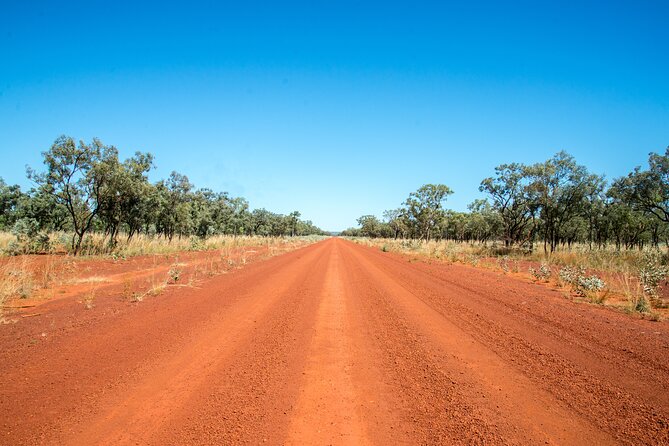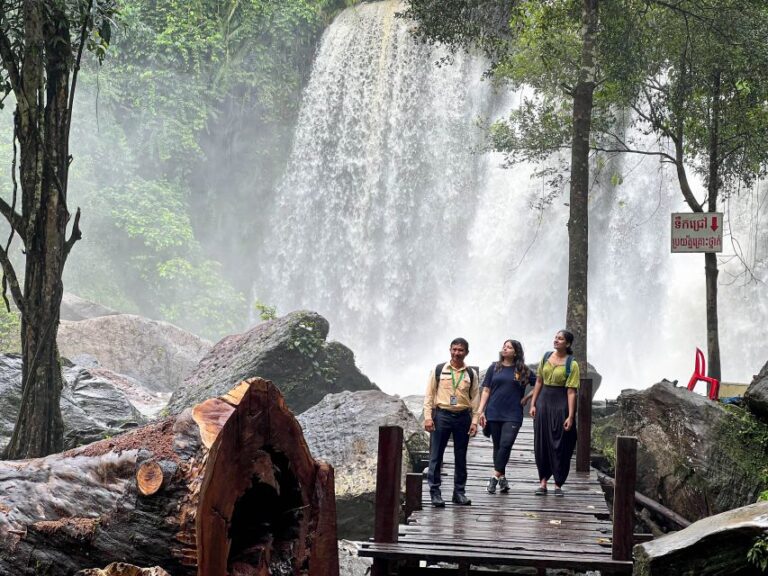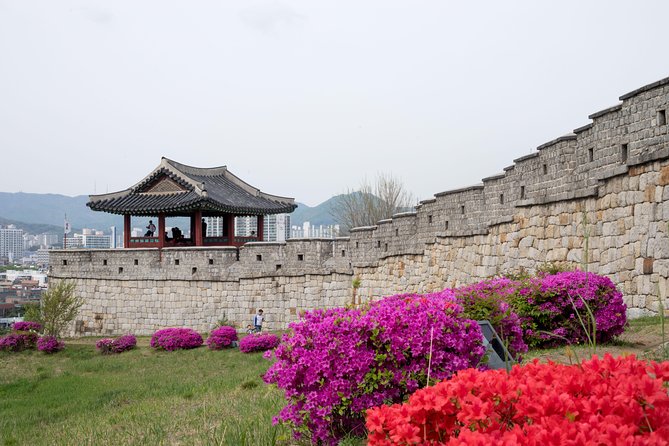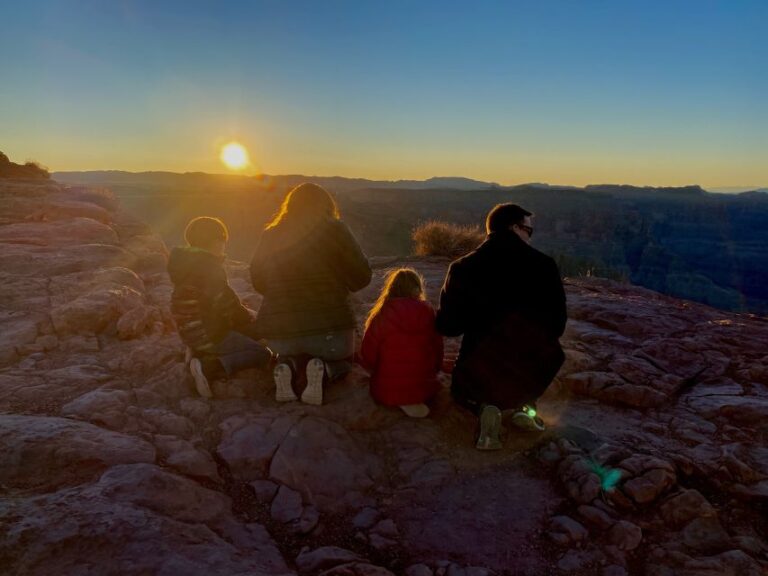Nestled amidst the verdant Cambodian jungles lie the enigmatic Koh Ker Temple and Beng Mealea Temple, each a testament to the ancient Khmer civilization’s architectural and artistic prowess.
Koh Ker’s grand seven-tiered pyramid and intricate sculptures offer a glimpse into a once-flourishing capital, while Beng Mealea’s weathered towers and unique blend of Hindu and Buddhist motifs spark curiosity about its mysterious past.
As visitors traverse through these historical marvels, the allure of Cambodia’s rich heritage beckons, promising a journey of discovery and wonder beyond compare.
Just The Basics
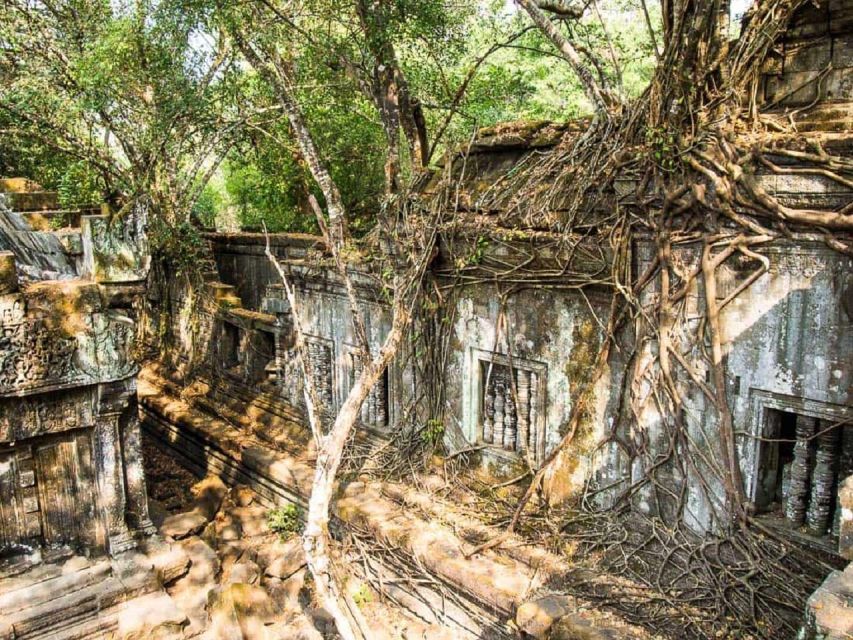
- Koh Ker and Beng Mealea temples showcase Khmer empire‘s architectural and sculptural prowess.
- Koh Ker briefly served as the Khmer capital, highlighting its historical significance.
- Beng Mealea’s unique blend of Hindu and Buddhist motifs makes it an important archaeological site.
- Both temples’ inclusion on the UNESCO World Heritage List underscores their global importance.
Location of Koh Ker and Beng Mealea Temples
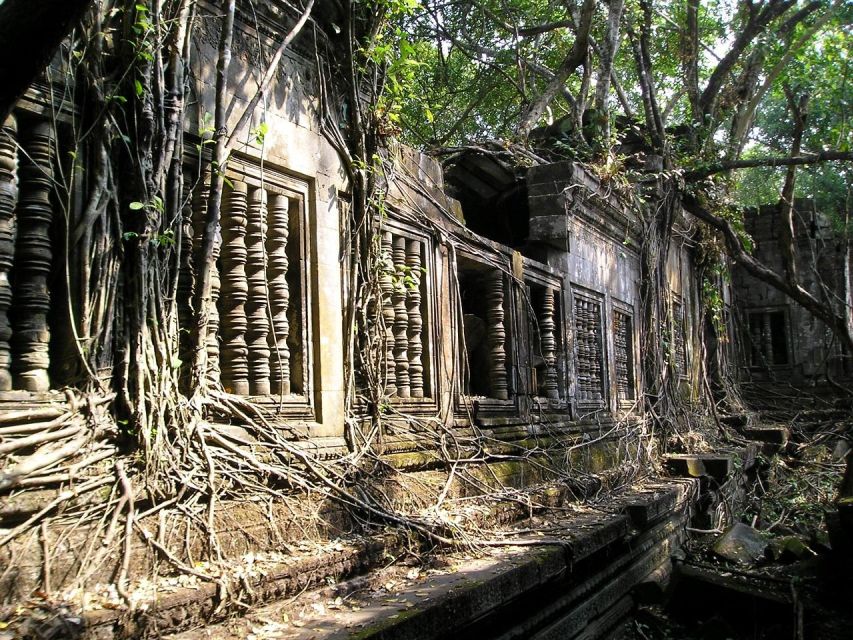
Nestled amidst the lush jungles of northern Cambodia, Koh Ker Temple stands approximately 120 kilometers away from Siem Reap, while Beng Mealea Temple is situated at a distance of 77 km from the bustling city.
These temples are located in remote areas, surrounded by dense jungle landscapes, adding to their mystique and allure. Koh Ker Temple covers an extensive area of 81 square kilometers, showcasing its grandeur and historical significance.
Both temples have earned UNESCO recognition, underlining their global importance as valuable cultural and archaeological sites. Despite their remote locations, these temples continue to attract visitors from around the world, drawn by the rich history and architectural wonders that these ancient structures offer.
Historical Significance of Koh Ker
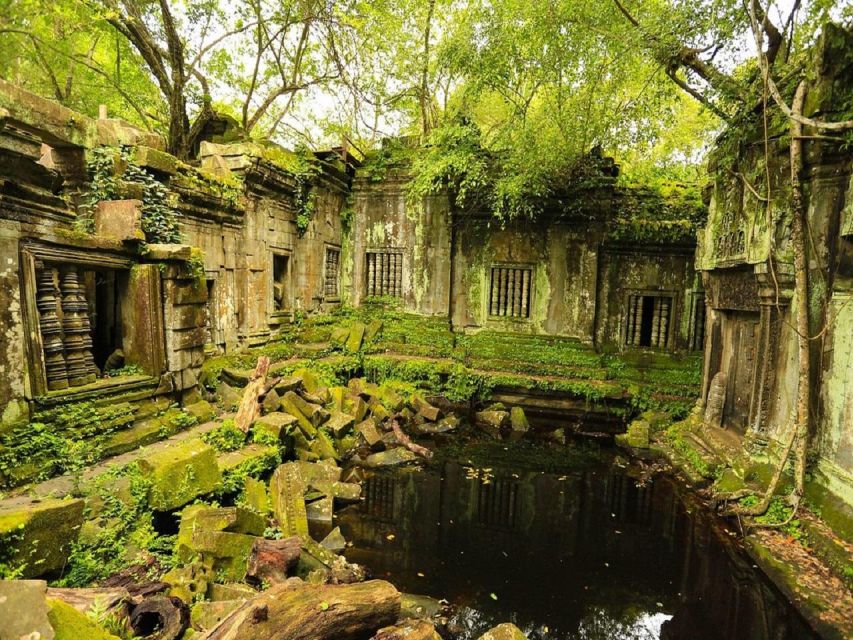
Surrounded by the dense jungles of northern Cambodia, Koh Ker Temple stands as a testament to a pivotal era in the Khmer empire‘s history, showcasing remarkable architectural and sculptural achievements under the reign of Jayavarman IV.
During Jayavarman IV’s rule from 928 to 944 AD, this site briefly served as the capital of the Khmer empire. His ambitious building program led to the construction of around forty temples, with the most notable being a 36-meter high seven-tiered pyramid.
The sculptures at Koh Ker are considered masterpieces, reflecting the artistic legacy of the Khmer civilization. Despite facing challenges such as looting, Koh Ker’s inclusion on the UNESCO World Heritage List in 2024 highlights its global significance in preserving the Khmer empire’s artistic heritage.
Architectural Features of Beng Mealea
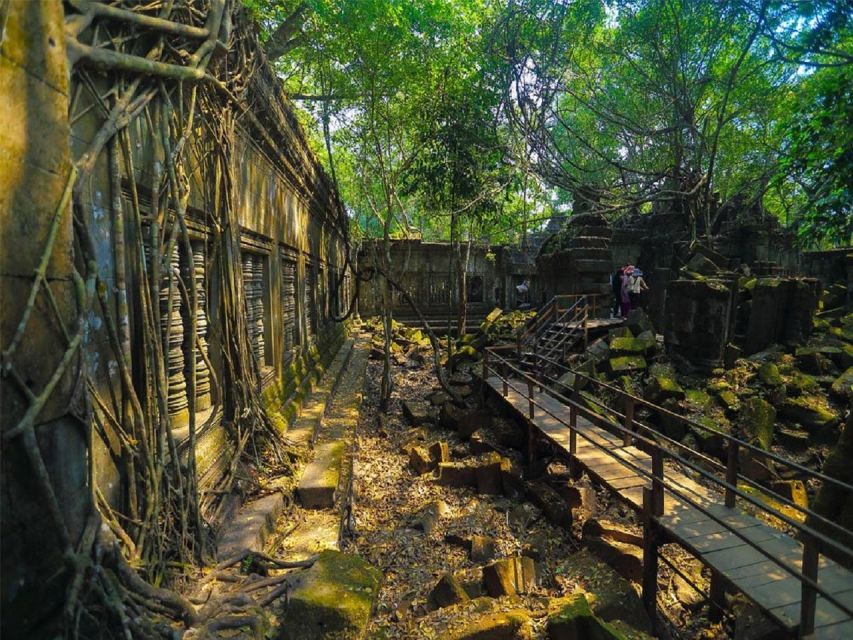
How do the intricate carvings and unique architectural layout of Beng Mealea Temple provide insights into the blend of Hindu and Buddhist influences in Khmer civilization?
Beng Mealea Temple, with its symbolic carvings and structural layout, offers a captivating glimpse into the fusion of Hindu and Buddhist elements within Khmer architecture. The temple showcases elaborate carvings depicting scenes from Hindu mythology, reflecting the cultural and religious beliefs of the time. Its orientation towards the east and entranceways from all cardinal directions symbolize the harmony between different spiritual traditions.
Plus, the Naga serpent bodies forming balustrades along the causeways highlight the significance of symbolic representations in Khmer architectural design. Beng Mealea’s architectural features not only showcase the artistic prowess of the Khmer civilization but also emphasize the cultural richness of the era.
Cultural Significance of Both Temples
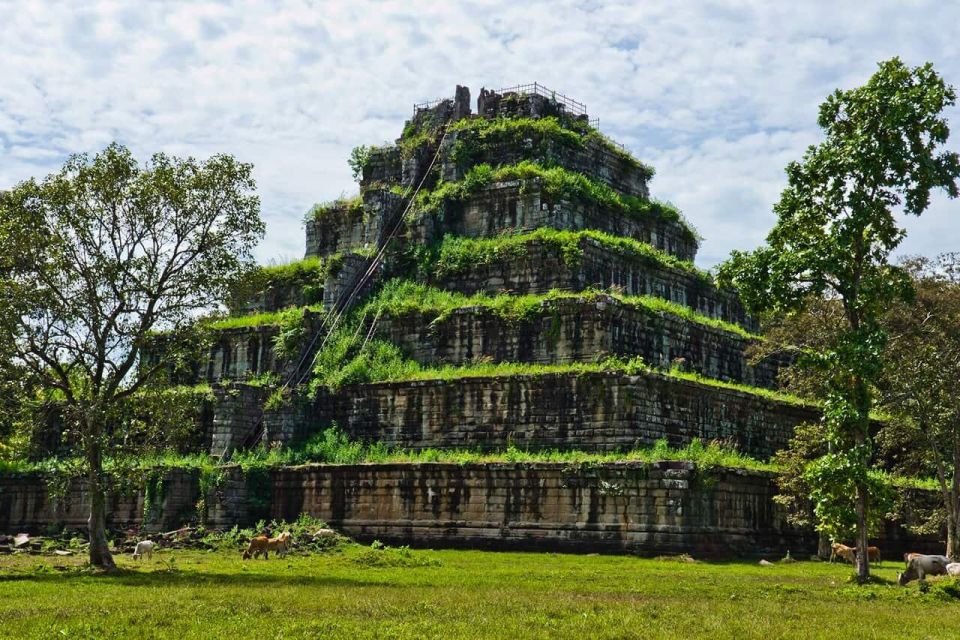
Both temples, Koh Ker and Beng Mealea, hold profound cultural significance as they exemplify the artistic and architectural achievements of the Khmer civilization. These sites aren’t just architectural marvels but also repositories of Cambodia’s rich cultural heritage and artistic treasures.
Preservation efforts are ongoing to protect the intricate carvings and structures from further deterioration. Conservation methods are being employed to safeguard these archaeological wonders for future generations.
The cultural significance of Koh Ker lies in its brief stint as the Khmer empire’s capital, showcasing a pinnacle in Khmer sculpture and architecture under Jayavarman IV. Beng Mealea’s unique blend of Hindu and Buddhist motifs adds to its importance as an archaeological site. Both temples stand as testaments to the Khmer civilization’s artistic ingenuity and continue to be beacon points of Cambodia’s historical and cultural legacy.
Accessibility to Koh Ker and Beng Mealea
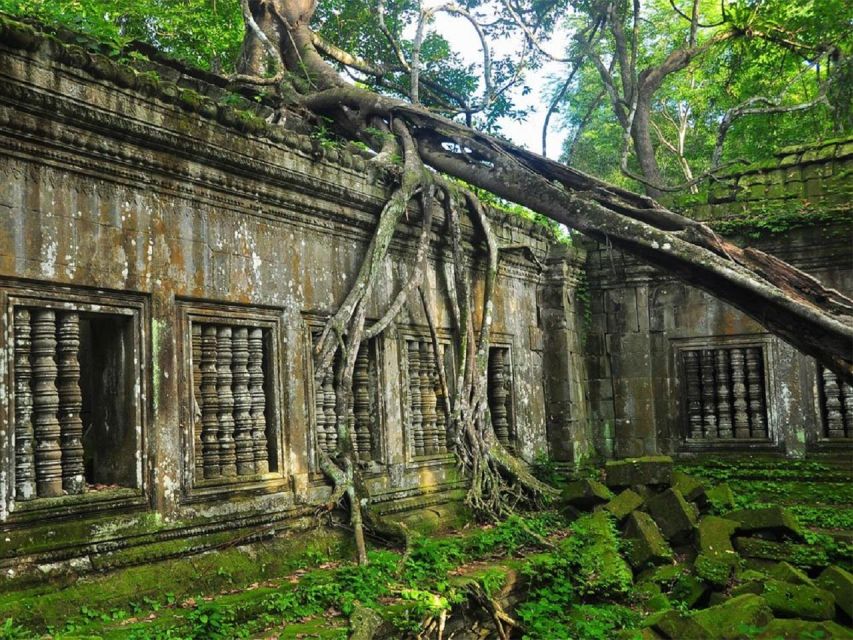
Accessible from Siem Reap by road, visitors can easily reach the remote and intriguing temples of Koh Ker and Beng Mealea in northern Cambodia. Improving infrastructure has made Beng Mealea more accessible, attracting travelers interested in exploring its unique blend of Hindu and Buddhist motifs.
The road leading to Koh Ker, passing through Beng Mealea, has facilitated tourist accessibility to both sites. Despite Koh Ker’s remote location, efforts are being made to enhance accessibility and prevent looting, as the site’s sculptures are considered masterpieces.
Both temples continue to draw visitors keen on Cambodia’s rich history and culture, with the improved infrastructure around Beng Mealea making it easier for travelers to explore and appreciate the architectural and artistic prowess of these ancient Khmer civilization sites.
Challenges Faced by Koh Ker
Tourists exploring the ancient wonders of Koh Ker may encounter significant challenges due to the temple’s remote location and historical significance, including ongoing efforts to protect its valuable sculptures from looting. The threat of looting poses a constant risk to the priceless sculptures at Koh Ker, which are considered masterpieces of Khmer art.
Conservation efforts are being actively pursued to safeguard these sculptures and preserve the site’s historical integrity. Despite being inscribed on the UNESCO World Heritage List, the remote location of Koh Ker makes it vulnerable to illicit activities.
Visitors must be aware of these challenges and support the conservation initiatives to ensure that Koh Ker’s cultural treasures are protected for future generations.
Visitor Experience and Tourism Opportunities
Visitors to Koh Ker and Beng Mealea temples can enjoy a rich tapestry of history and culture, offering unique insights into Cambodia’s ancient heritage. When exploring these sites, travelers can enjoy:
-
Jungle Exploration: The temples are surrounded by lush jungles, providing a unique setting for adventurous exploration.
-
Photography Opportunities: Capture stunning shots of intricate carvings, towering structures, and the natural beauty that envelops these archaeological wonders.
-
Local Cuisine: Sample authentic Cambodian dishes at nearby eateries, experiencing the flavors of the region.
-
Souvenir Shopping: Browse through local shops for handmade crafts and souvenirs to take home as mementos of the visit.
Common questions
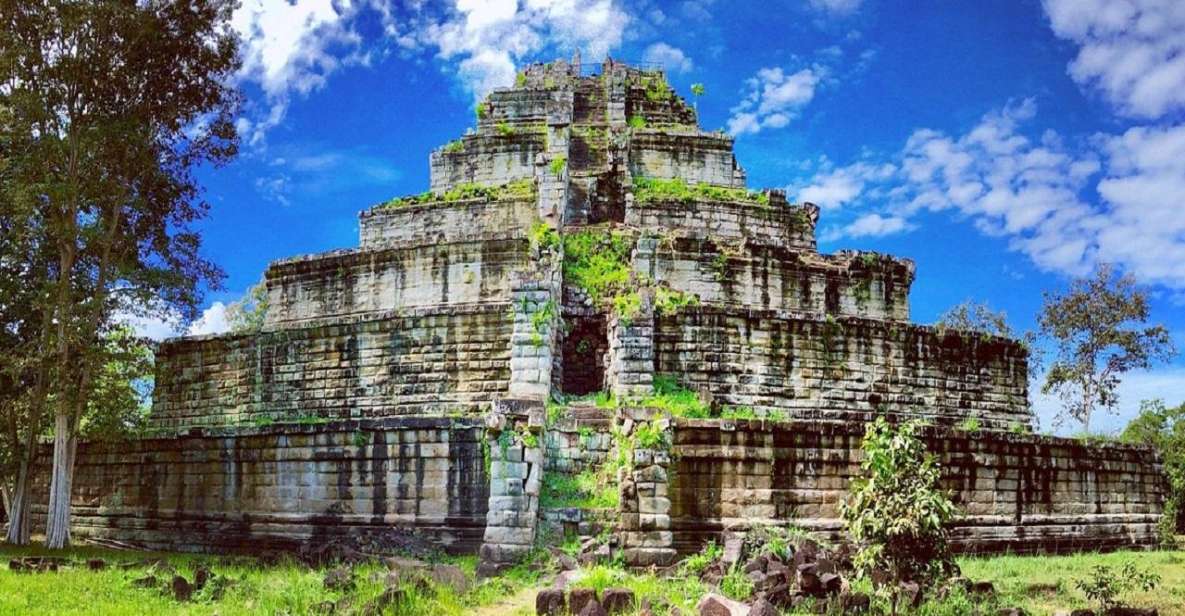
Are There Any Specific Rituals or Ceremonies That Take Place at Koh Ker and Beng Mealea Temples?
Traditional ceremonies and cultural practices are integral to the rituals at Koh Ker and Beng Mealea temples. Visitors can witness sacred ceremonies, observe local traditions, and enjoy the rich cultural heritage of Cambodia.
What Conservation Efforts Are Being Made to Protect the Sculptures and Carvings at Koh Ker From Further Looting?
Conservation efforts at Koh Ker focus on sculptural protection to prevent looting. Surveillance systems, increased patrols, and community involvement aid in safeguarding the site. Cultural ceremonies raise awareness and foster local pride in preserving these historical treasures.
How Do the Architectural Styles of Koh Ker and Beng Mealea Temples Differ From Other Khmer Temples in Cambodia?
In Cambodia, the architectural styles of Koh Ker and Beng Mealea temples stand out due to their unique influences and building materials. They boast significant cultural importance and intricate artistic details, setting them apart from other Khmer temples.
Are There Any Local Legends or Myths Associated With the Construction and History of Beng Mealea Temple?
Local folklore tales surrounding Beng Mealea Temple hint at mythical connections to Hindu epics, adding to its cultural significance. The temple’s historical mysteries intrigue visitors, offering a glimpse into Cambodia’s rich past and the blending of myth and reality.
How Have Modern Developments and Infrastructure Improvements Impacted the Surrounding Communities Near Koh Ker and Beng Mealea Temples?
Infrastructure improvements near Koh Ker and Beng Mealea temples have enhanced community development by increasing accessibility for travelers. These developments have boosted local economies, provided job opportunities, and preserved the cultural heritage of the region.
Not for you? Here's more of our most recent tour reviews happening neaby
- Beng Mealea and Koh Ker Temple Private Day Tour
- 10 Day Temple Exploration Trip in Siem Reap
- Preah Vihear and Koh Ker Temples Private Tours
- Expert Guide Explore the Lost Temples Beng Mealea & Koh Ker
- Koh Ker, Beng Mealea and Floating Village.
- Siem Reap: Private Preah Vihear and Koh Ker Temples Tour
- From Koh Ker: Full-Day Private Tour of Cambodian Temples
- Koh Ker & Beng Mealea Temples Small Group Tour
- Banteay Srei, Beng Mealea & Koh Ker Small-Group Tour
- Private Tour Koh Ker & Beng Meala Temples
- Private One Day Trip-Pyramid Temple Koh Ker and Beng Mealea
- Private Cambodia Adventure 3 Days Tour
- Preah Vihear and Koh Ker Temples in Small Group Tour
Last Words
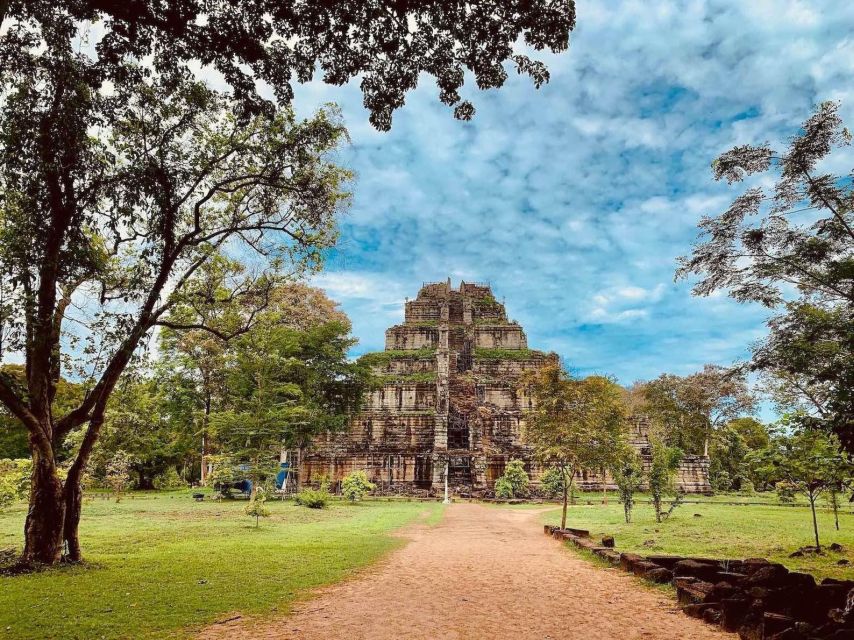
To sum it up, Koh Ker and Beng Mealea Temples offer a captivating journey through Cambodia’s ancient past, showcasing the architectural and cultural brilliance of the Khmer civilization. Despite the challenges faced by Koh Ker, improved accessibility has allowed visitors to appreciate these archaeological wonders.
From the grand seven-tiered pyramid of Koh Ker to the weathered towers of Beng Mealea, these temples stand as testaments to the rich heritage of Cambodia, inviting travelers to explore and unravel their mysteries.

